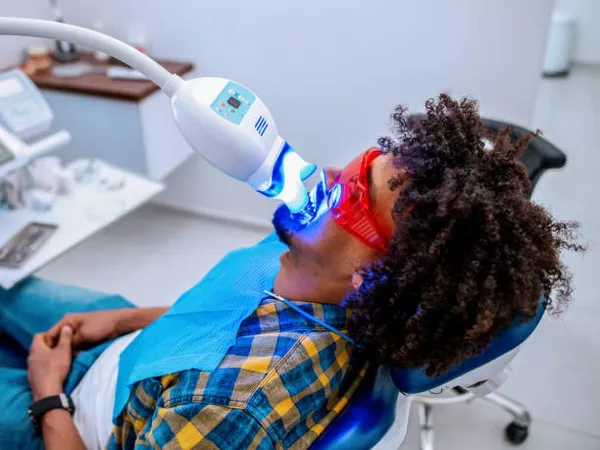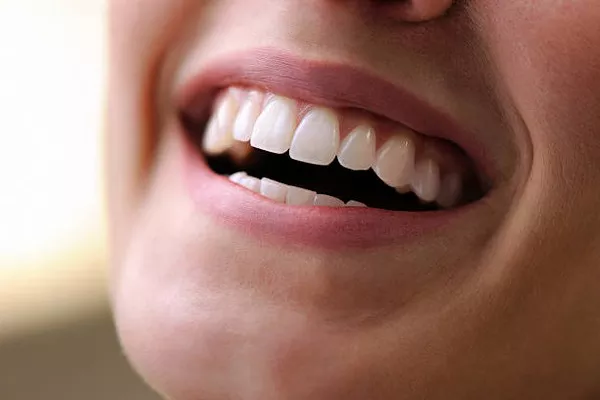Teeth whitening is a popular cosmetic dental procedure designed to enhance the brightness and appearance of your smile. A common question patients have is whether light can aid in the teeth whitening process. This article will delve into the role of light in teeth whitening treatments, explaining its mechanism, effectiveness, and overall impact compared to other methods.
Understanding Teeth Whitening
Teeth whitening is a process aimed at removing stains and discoloration from the teeth. This procedure can significantly improve your smile and boost your confidence. Various methods are available, each with its own set of benefits and limitations.
Types of Teeth Whitening Methods
1. Over-the-Counter Whitening Products
These products are readily available and include:
Whitening Toothpaste: Contains mild abrasives or chemicals to help remove surface stains. Often suitable for everyday maintenance.
Whitening Strips: Thin, flexible strips coated with a whitening gel. Typically worn for a specified duration each day.
Whitening Gels: Applied directly to the teeth using a brush or tray. Often used in conjunction with other whitening products.
While convenient and accessible, these methods generally offer limited results and require consistent use over time.
2. Professional Whitening Treatments
Professional treatments are conducted by dental professionals and typically offer more dramatic results. They include:
In-Office Whitening: Uses high concentrations of bleaching agents and may involve light or laser to enhance effectiveness. Results are usually noticeable after a single session.
Take-Home Kits: Custom-fitted trays filled with a bleaching gel, which you wear at home. These kits are provided by your dentist and offer more control over the whitening process.
Role of Light in Teeth Whitening
1. How Light is Used in Whitening Procedures
In some professional teeth whitening procedures, light is used to accelerate the bleaching process. The typical procedure involves:
Application of a Bleaching Agent: A whitening gel, usually containing hydrogen peroxide or carbamide peroxide, is applied to the teeth.
Exposure to Light: A special light, often a blue LED light or a laser, is directed at the teeth. The light activates the bleaching agent, enhancing its effectiveness.
2. Mechanism of Light Activation
The light used in whitening treatments activates the bleaching agent in the following way:
Activation of Bleaching Agent: The light exposure causes the bleaching agent to break down into smaller molecules.
Release of Oxygen Radicals: These smaller molecules release oxygen radicals, which penetrate the tooth enamel and break down stains.
Accelerated Whitening: The enhanced reaction speeds up the whitening process, allowing for faster and more noticeable results.
Effectiveness of Light-Activated Whitening
1. Research and Studies
Research on light-activated teeth whitening has provided valuable insights into its effectiveness. Key findings include:
Enhanced Results: Studies generally indicate that light can enhance the effectiveness of bleaching agents.
Variation in Effectiveness: The extent of improvement varies based on the type of light used, the concentration of the bleaching agent, and individual factors.
2. Comparative Results
When comparing light-activated whitening to other methods:
In-Office Treatments: Often more effective than over-the-counter products. The combination of light and high-concentration bleaching agents usually results in more significant whitening.
Speed of Results: Light-activated whitening typically produces quicker results compared to at-home whitening kits.
Benefits of Light-Activated Whitening
1. Faster Results
One of the main advantages of light-activated whitening is:
Quick Improvement: Patients often see noticeable results after just one session. This rapid improvement is appealing to many individuals seeking a quick cosmetic enhancement.
2. Enhanced Whitening
Light can enhance the whitening process by:
Increased Effectiveness: The light activates the bleaching agent more effectively, leading to brighter teeth compared to using the agent alone.
3. Professional Supervision
In-office whitening treatments come with the benefit of:
Expert Care: Procedures are performed by dental professionals who ensure the treatment is conducted safely and effectively.
Customization: Dentists can tailor the treatment to address specific staining and whitening needs.
Limitations and Considerations
1. Sensitivity Issues
Some patients may experience:
Increased Sensitivity: Light-activated whitening can lead to temporary tooth sensitivity.
Management Options: Dentists may recommend desensitizing toothpaste or other products to help manage this side effect.
2. Cost Considerations
The cost of light-activated whitening can be:
Higher Price: Generally more expensive than over-the-counter products due to the use of advanced technology and professional care.
Variable Costs: The cost can vary based on the location and specific treatment provided.
3. Long-Term Effectiveness
To maintain the results of light-activated whitening:
Regular Maintenance: It is important to practice good oral hygiene and avoid stain-causing foods and beverages.
Periodic Touch-Ups: Regular touch-ups may be required to keep teeth looking bright.
Alternative Whitening Methods
1. At-Home Whitening Kits
These kits offer:
Customizable Whitening: Includes trays and gel that can be used at home over several weeks.
Cost-Effectiveness: Less expensive than in-office treatments, though results may take longer to achieve.
2. Natural Whitening Remedies
Natural remedies include:
Baking Soda: Known for its mild abrasive properties that can help remove surface stains.
Activated Charcoal: Believed to help with stain removal due to its porous nature.
Hydrogen Peroxide: Sometimes used in lower concentrations to help lighten teeth.
While these methods can help with surface stains, they are generally less effective than professional treatments and may not deliver the same level of whitening.
See Also: Can You Whiten Dental Fillings
Choosing the Right Whitening Method
Choosing the right whitening method is crucial for achieving the best results and ensuring that the treatment aligns with your personal needs and preferences.
Consultation with a Dentist
1. Professional Assessment
Initial Evaluation: Consulting with a dentist is the first step in choosing the right whitening method. During this consultation, the dentist will evaluate your oral health, including the condition of your teeth and gums.
Assessment of Staining: The dentist will assess the type and extent of staining or discoloration on your teeth. This evaluation helps in determining the most effective treatment for your specific needs.
Discussion of Goals: You will discuss your whitening goals with the dentist. Whether you want a subtle improvement or a dramatic change, the dentist can recommend a treatment that aligns with your expectations.
2. Tailored Recommendations
Personalized Treatment Plan: Based on the assessment, the dentist will create a personalized treatment plan. This plan will consider factors such as the type of stains, the condition of your teeth, and your budget.
Product Selection: The dentist will recommend specific whitening products or treatments that are best suited for you. This may include in-office treatments, take-home kits, or a combination of methods.
3. Addressing Concerns
Sensitivity Management: If you have concerns about tooth sensitivity, the dentist can recommend desensitizing products or adjust the treatment plan to minimize discomfort.
Long-Term Maintenance: The dentist will provide guidance on maintaining the results and avoiding factors that can cause staining, such as certain foods and beverages.
In-Office Whitening Treatments
1. Advantages of In-Office Whitening
Quick Results: In-office treatments provide rapid results. Most procedures deliver noticeable improvements after just one session, making them ideal for those seeking immediate results.
Enhanced Whitening: Professional treatments often use high-concentration bleaching agents and advanced technology, such as light activation, to achieve superior whitening outcomes.
Expert Supervision: The procedure is conducted by a dental professional, ensuring that it is performed safely and effectively. The dentist can monitor progress and make adjustments as needed.
2. Procedure Details
Application of Bleaching Agent: The dentist applies a high-concentration bleaching gel to your teeth. This gel is often activated by a special light or laser to enhance its effectiveness.
Duration of Treatment: The treatment usually takes about an hour, depending on the level of whitening required. Multiple sessions may be needed for optimal results.
Post-Treatment Care: After the procedure, the dentist will provide instructions for maintaining the results and managing any temporary sensitivity that may occur.
Take-Home Whitening Kits
1. Benefits of Take-Home Kits
Convenience: Take-home kits offer flexibility, allowing you to whiten your teeth at your own pace and convenience. You can use the kit at home and adjust the treatment according to your schedule.
Custom Fit: The kits typically include custom-fitted trays that ensure even application of the whitening gel. This customization helps in achieving consistent and effective results.
Cost-Effectiveness: Take-home kits are generally more affordable than in-office treatments. They offer a cost-effective solution for individuals who prefer to whiten their teeth at home.
2. Usage Instructions
Application Process: The whitening gel is applied to the custom trays, which are then worn over your teeth for a specified duration each day. The length of treatment varies based on the product and your desired results.
Duration of Treatment: Results from take-home kits may take several weeks to become noticeable. Consistent use is required to achieve the best results.
Managing Sensitivity: If you experience sensitivity, you can consult your dentist for recommendations on managing discomfort and adjusting the treatment plan.
Over-the-Counter Whitening Products
1. Types of Over-the-Counter Products
Whitening Toothpaste: Contains mild abrasives or chemicals that help remove surface stains. It is suitable for everyday maintenance and can be used in conjunction with other whitening methods.
Whitening Strips: Thin, flexible strips coated with a whitening gel. They are typically worn for a specified period each day and can provide noticeable results over time.
Whitening Gels: Applied directly to the teeth using a brush or tray. These gels are usually less concentrated than professional products and may require longer use to achieve desired results.
2. Considerations
Effectiveness: Over-the-counter products are generally less effective than professional treatments. They can help with surface stains but may not provide the same level of whitening.
Consistency Required: Regular and consistent use is necessary to see improvements. Results may take longer compared to in-office or take-home treatments.
Cost: These products are typically more affordable than professional treatments, making them a budget-friendly option for those seeking minor improvements.
Conclusion
In conclusion, light can significantly aid in the teeth whitening process by enhancing the effectiveness of bleaching agents and accelerating the whitening process. While light-activated whitening treatments offer faster and more noticeable results compared to other methods, it is essential to consider factors such as cost, sensitivity, and long-term effectiveness. Consulting with a dental professional will help you choose the best whitening method to achieve and maintain a brighter, healthier smile.
You Might Be Interested In






























